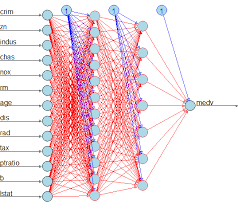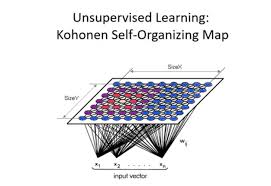Neural networks have revolutionized the field of machine learning, enabling computers to learn complex patterns and make decisions in a way that mimics the human brain. In R, a powerful programming language and environment for statistical computing and graphics, neural networks are implemented through various packages such as ‘neuralnet’ and ‘nnet’.
The ‘neuralnet’ package in R provides a flexible framework for building and training neural networks with multiple hidden layers. This package allows users to define custom network architectures, specify activation functions, and tune hyperparameters to optimize performance. With ‘neuralnet’, researchers and data scientists can tackle a wide range of tasks, from image recognition to time series forecasting.
On the other hand, the ‘nnet’ package in R offers a simpler interface for creating feedforward neural networks with a single hidden layer. While less customizable compared to ‘neuralnet’, ‘nnet’ is well-suited for beginners or those looking for a quick and easy way to implement neural networks in their projects.
Both packages leverage the power of neural networks to model complex relationships in data and make predictions based on learned patterns. By utilizing these tools in R, users can take advantage of the vast capabilities of neural networks without the need for extensive knowledge of deep learning frameworks like TensorFlow or PyTorch.
Whether you are a seasoned data scientist or just starting out in machine learning, exploring neural networks in R can open up new possibilities for analyzing data, solving problems, and unlocking insights that were previously out of reach.
Six Advantages of Using R for Neural Network Implementation: Complexity, Flexibility, Customization, Effectiveness, User-Friendly Options, and Accessibility Without Deep Learning Expertise
- Powerful tool for modeling complex relationships in data
- Flexible framework for building neural networks with multiple hidden layers
- Ability to customize network architectures and activation functions
- Effective for tasks such as image recognition and time series forecasting
- Simpler interface available for beginners with the ‘nnet’ package
- No need for extensive knowledge of deep learning frameworks like TensorFlow or PyTorch
Challenges of Implementing Neural Networks in R: Learning Complexities, Computational Demands, Hyperparameter Tuning, and Interpretability Issues
- Steep learning curve for beginners unfamiliar with neural networks and R programming.
- Computationally intensive, especially when working with large datasets or complex network architectures.
- May require significant hyperparameter tuning to achieve optimal performance, which can be time-consuming.
- Interpreting and explaining the results of neural network models can be challenging due to their black-box nature.
Powerful tool for modeling complex relationships in data
Neural networks in R serve as a powerful tool for modeling complex relationships within data. By leveraging the capabilities of neural networks, researchers and data scientists can uncover intricate patterns and dependencies that may not be apparent through traditional statistical methods. This allows for more accurate predictions and insights, especially in scenarios where the relationships between variables are nonlinear or multidimensional. With neural networks in R, users can effectively capture the nuances of complex datasets and extract valuable information that can drive informed decision-making and innovative solutions.
Flexible framework for building neural networks with multiple hidden layers
One significant advantage of using neural networks in R is the flexible framework it provides for building models with multiple hidden layers. This flexibility allows researchers and data scientists to design complex neural network architectures tailored to their specific needs and data requirements. By incorporating multiple hidden layers, neural networks in R can effectively capture intricate patterns and relationships within the data, leading to more accurate predictions and insights. This capability to create deep neural networks enables users to tackle a wide range of tasks, from image recognition to natural language processing, making R a powerful tool for advanced machine learning applications.
Ability to customize network architectures and activation functions
The ability to customize network architectures and activation functions in neural networks implemented in R, such as the ‘neuralnet’ package, provides users with a high degree of flexibility and control over model design. This pro allows researchers and data scientists to tailor the neural network structure to the specific requirements of their data and problem domain, leading to improved performance and more accurate predictions. By experimenting with different architectures and activation functions, users can fine-tune their models to capture complex patterns and relationships within the data, ultimately enhancing the overall effectiveness of their machine learning workflows.
Effective for tasks such as image recognition and time series forecasting
Neural networks in R offer a significant advantage in tasks such as image recognition and time series forecasting due to their effectiveness in capturing complex patterns and relationships within data. By leveraging the power of neural networks, researchers and data scientists can achieve remarkable accuracy in identifying objects within images or making precise predictions based on historical time series data. The flexibility and scalability of neural network models in R make them a valuable tool for tackling challenging tasks that require sophisticated pattern recognition and predictive capabilities.
Simpler interface available for beginners with the ‘nnet’ package
The availability of a simpler interface for beginners in the ‘nnet’ package is a significant advantage of using neural networks in R. This package offers a user-friendly approach to creating feedforward neural networks with a single hidden layer, making it accessible to those who are new to machine learning and neural network concepts. By providing an intuitive framework and easy-to-use functions, ‘nnet’ empowers beginners to quickly grasp the fundamentals of neural networks and start building predictive models without the steep learning curve associated with more complex deep learning frameworks.
No need for extensive knowledge of deep learning frameworks like TensorFlow or PyTorch
One significant advantage of using neural networks in R is that users do not require extensive knowledge of deep learning frameworks like TensorFlow or PyTorch. With packages such as ‘neuralnet’ and ‘nnet’, researchers and data scientists can leverage the power of neural networks directly within the R environment, without the need for additional complex tools or libraries. This accessibility allows a wider range of users to harness the capabilities of neural networks for tasks such as pattern recognition, predictive modeling, and data analysis, making it easier to incorporate advanced machine learning techniques into their projects.
Steep learning curve for beginners unfamiliar with neural networks and R programming.
Navigating the world of neural networks in R can present a significant challenge for beginners who are not familiar with both neural networks and R programming. The steep learning curve associated with understanding the intricate workings of neural networks, coupled with the complexities of R programming syntax and functions, can be overwhelming for newcomers. Without prior experience in these areas, beginners may find it difficult to grasp fundamental concepts, troubleshoot errors effectively, and optimize neural network models for their specific tasks. However, with dedication, practice, and access to resources such as tutorials and online communities, beginners can gradually overcome this obstacle and develop proficiency in utilizing neural networks within the R environment.
Computationally intensive, especially when working with large datasets or complex network architectures.
One notable downside of utilizing neural networks in R is their computational intensity, particularly evident when handling extensive datasets or intricate network structures. The process of training neural networks involves numerous calculations and iterations, which can lead to significant computational demands. When working with large datasets or complex architectures in R, the time and resources required to train the neural network can increase substantially, potentially impacting the efficiency and speed of the modeling process. Researchers and data scientists need to be mindful of these computational challenges and consider optimization strategies to mitigate the computational burden associated with neural networks in R.
May require significant hyperparameter tuning to achieve optimal performance, which can be time-consuming.
One of the drawbacks of using neural networks in R is that they may require significant hyperparameter tuning to achieve optimal performance, which can be a time-consuming process. Hyperparameters such as learning rate, batch size, number of hidden layers, and activation functions play a crucial role in determining the effectiveness of a neural network model. Finding the right combination of hyperparameters through trial and error can be challenging and often requires extensive experimentation. This need for meticulous tuning can slow down the development and deployment of neural network models in R, making it a potential bottleneck in the machine learning workflow.
Interpreting and explaining the results of neural network models can be challenging due to their black-box nature.
Interpreting and explaining the results of neural network models in R can be challenging due to their black-box nature. Unlike traditional statistical models that provide clear insights into the relationships between variables, neural networks operate by learning complex patterns in data through layers of interconnected nodes. This opacity makes it difficult to understand how the model arrives at its predictions, leading to challenges in explaining its decisions to stakeholders or identifying potential biases. As a result, researchers and data scientists must explore alternative methods, such as feature importance analysis or model-agnostic techniques, to shed light on the inner workings of neural networks and enhance their interpretability.




